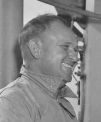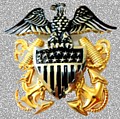Home
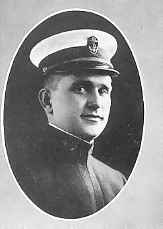
Captain Kiefer's
Farewell Address
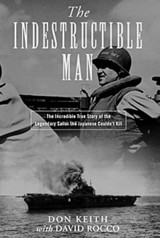
The Incredible True
Story of the Legendary Sailor the Japanese Couldn't Kill
|
Born Blackfoot, Idaho April 5, 1896. Son of Mrs. H.G. Kiefer. Entered Naval Academy 1916. Received commission June
1918. Assigned to Destroyer Corona in European waters.
The Vought UO-1 was the first airplane to be catapulted from a battleship at night. On November 26, 1924,
Lt. Dixie Kiefer flew the plane off the USS. California in San Diego harbor. The only illumination came from the ship’s
searchlights trained 1,000 yards ahead.
Kiefer died in a plane crash on the flanks of Mount Beacon, New York, an ironic end to the military
career of one of the most popular figures of the Pacific War. Keifer’s death was less than a year after he survived
wounds in a Japanese kamikaze attack on his ship in the closing months of the war. Kiefer was aboard a Navy Beechcraft
two-motored transport with five other Navy men, flying through heavy fog which covered the area November 12, 1945. Kiefer was a
real-life hero as the commanding officer of one of the carriers, the Ticonderoga, which continued on active duty until relatively
recent times. He was a make-believe hero in one of those popular postwar military theme films, “Fighting Lady,” which
dramatized the role of the first carriers in the Pacific war.
At a Memorial gathering In 1985 John Austin of the association wrote, “The officers and men who
served with him are now 40 years older, but they have vivid memories of his heroism and his humanity. Dixie Kiefer had the
right stuff which produces a happy ship in calm seas and a combatant vessel of the first rank in stormy waters.”
In a letter to his friend J.T. MacGarvey, chief inspector for the navy at Pratt and
Whitney, Capt. Kiefer wrote about his participation in the battles of the Coral Sea and Midway and while recovering from
wounds recieved, he was looking forward to taking command of a New Carrier and getting back to the war .
The following is an eyewitness account of the Battle of Midway written by John E. Greenbacker Sr. of Halifax who served aboard
the USS Yorktown.
To understand the attitude and morale of
the ship's company of YORKTOWN as we approached Midway, it is necessary to begin with the Battle of the Coral Sea. We
considered ourselves a great success in that action. Our planes had performed well and our gunnery had been outstanding, having
been credited with fourteen Japanese aircraft. Perhaps unfairly, we prided ourselves on having performed incomparably better than
the ill-fated LEXINGTON. Morale was high as a result and further enhanced by the unique leadership characteristics of our
Executive Officer, Commander Dixie Kiefer. The long months the ship had spent in the South Pacific had welded the ship and
the air group into a single unit.
| 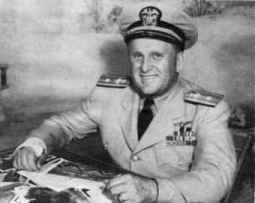
Photo -
courtesy of J.T. MacGarvey and Tim Quigley |
In January 1945, Admiral William F. “Bull” Halsey’s carrier force was trying to
slip out of the South China Sea after a week of sorties against Japanese land positions, Austin said. Five planes from
Japan’s Special Attack Corps appeared in the sky as the Ticonderoga filed through the narrow Bashi channel between Taiwan
and the outer islands of the northern Philippines. Anti-aircraft guns knocked three to the sea. One ripped the forward end of the
flight deck. The fifth slammed into the bridge, and Kiefer was pushed to the deck with his body pierced by more than 60 pieces
of metal. He could not move and refused to be carried from the bridge until the other wounded had been cared for. He had to wait
for hours. There were 345 killed, injured or missing. Ticonderoga was once the fastest ship in the world. It limped to away at 10
knots, Kiefer was transferred to a hospital ship.
Recently he underwent another operation for his wounded arm, and he was well
on the way to complete recovery. When he arrived at Quonset last Spring, he said he had one limb that had not been broken and that
he was going back into action until it was hit. End of the war disrupted that plan, and Commodore Kiefer then turned his entire
energies to Quonset and the air bases command.
Kiefer got his title "the indestructible man" from Secretary of the
Navy James V. Forrestal when the Navy Secretary gave him the Distinguished Service Medal, one of nine decorations that he
earned in battle. His most famous exploit came aboard the blazing aircraft carrier Ticonderoga, which was floundering so badly from
kamikaze attacks that a query crackled over the wireless: "Are you going to abandon ship?" "Hell, no!"
was Kiefer's classic answer.
|

